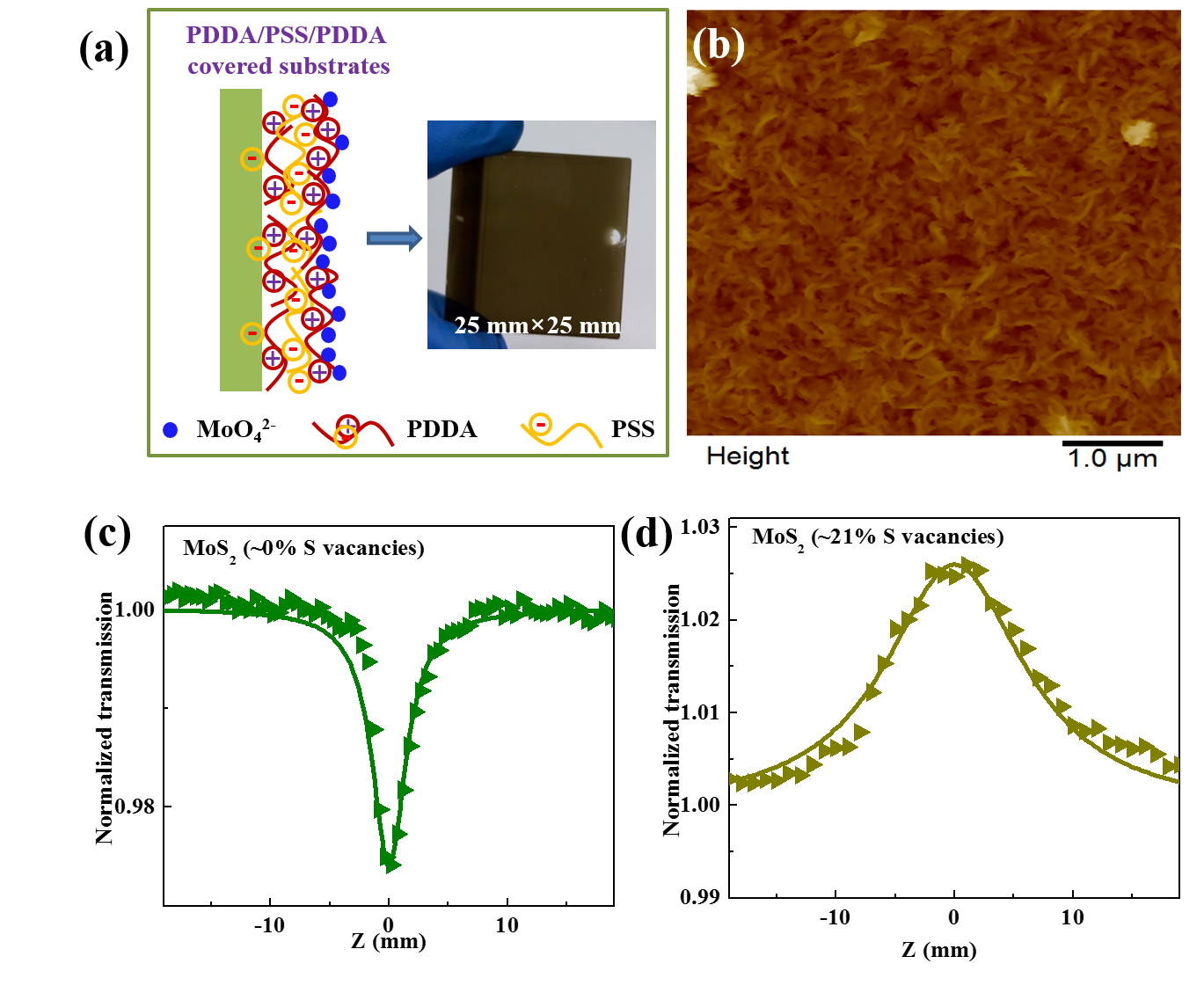Defect engineering, such as edges for improving the catalytic activity in hydrogen evolution and second-order nonlinear optics, and sulphur (S) vacancies for giant photoluminescence enhancement, plays a key role in determining the properties of two-dimensional (2D) transition metal dichalcogenides (TMDs). It is also an important way to tailor the third-order nonlinear optical (NLO) behavior of molybdenum disulfide (MoS2) for applications in photonic devices, including ultrafast pulsed lasers, optical modulators and optical switches. However, the precise defect engineering and elaborate mechanism analysis on NLO performances of 2D materials still remains unexplored.
Recently, by means of a modified solvothermal method via a polyelectrolyte-assisted annealing process, researchers in the group of Prof. Wang Jun from Shanghai Institute of Optics and Fine Mechanics (SIOM), Chinese Academy of Sciences, reported a direct strategy for the fabrication of wafer-scale 2D MoS2 nanofilms with tunable S vacancies and crystallinity. It was found that, by introducing new energy bands within the band gap of MoS2, the S vacancies in MoS2 nanofilms could induce saturable absorption (SA) and the crystallinity had a significant effect on the two-photon absorption (TPA) coefficient of nanofilms. The SA responses in MoS2 would gradually dominate the NLO behavior with a lower saturable intensity along with increasing the S vacancies.
Their experiment demonstrated that the TPA coefficient of the MoS2 nanofilms with increased crystallinity was over four times larger than that of their counterpart with relatively low crystallinity. Additionally, due to the increased crystallinity and partial oxidation of, the damage threshold of MoS2 nanofilms after polyelectrolyte-assisted annealing treatment was lifted to a large extent, over two times higher than their counterpart with few S vacancies and relatively low crystallinity.
This work sheds light on how the defects tailor the nonlinear optical properties of 2D MoS2 nanofilms and affords an effective strategy for defect engineering via a polyelectrolyte-assisted annealing process, which can be applied to other 2D TMDs.
The result, entitled “Tailoring the nonlinear optical performance of two-dimensional MoS2 nanofilms via defect engineering” has been published in Nanoscale [Nanoscale, 2018, 10, 17924]
The work was supported by the NSFC, the Strategic Priority Research Program of the CAS, the Key Research Program of Frontier Science of CAS, the Program of Shanghai Academic Research Leader, the Natural Science Foundation of Shanghai and the Youth Innovation Promotion Association, CAS.

MoS2 nanofilm: (a) Schematic fabrication process and its photograph; (b) Surface morphology; (c,d) Nonlinear optical behaviors tailored by different content of S vacancies.(Image by SIOM)
The text link:
https://pubs.rsc.org/en/content/articlepdf/2018/nr/c8nr05653f.